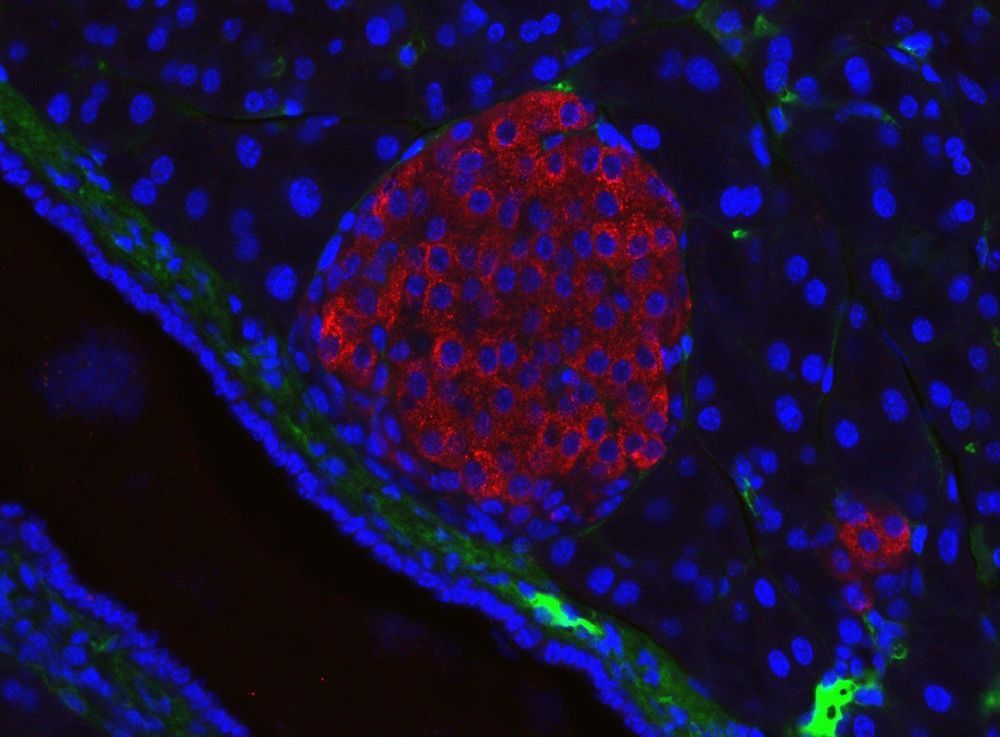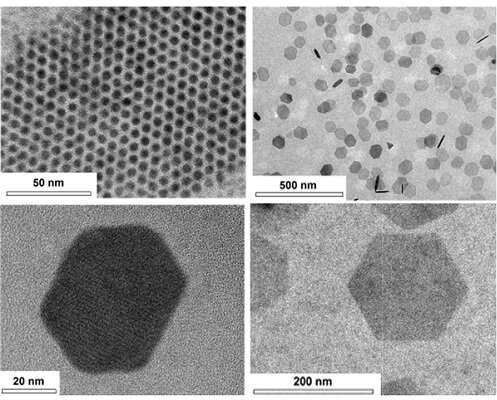Expanded genetic alphabet could allow for the production of new protein-based drugs.




A common concern about life extension is overpopulation, the idea that there are too many people in the world. Are we really headed for a global overpopulation meltdown, as some people believe? The United Nations’ World Population Prospects 2019 report suggests that while the global population will continue to rise for the next few decades, ultimately, that rise will plateau.
First things first: it’s population growth, not overpopulation
Whenever the topic of defeating age-related diseases comes up, there is inevitably someone who will cite overpopulation as an objection to healthy life extension and a reason why we should continue to let people become sick and die of diseases that science may be able to cure in the coming decades.

Two known gene mutations induce pathways that enhance pancreatic cancer’s ability to invade tissues and evade the immune system. Researchers report the molecular details of this process, providing insights into druggable targets for immunotherapies.
Mutations in the genes KRAS and TP53 are closely linked to pancreatic ductal adenocarcinoma, by far the most common type of pancreatic cancer. Pancreatic cancers are often already malignant when diagnosed, making its five-year survival rate extremely low—less than ten percent. So, understanding how it evolves at the molecular level could help anti-cancer drug development.
Hisataka Sabe of Hokkaido University and colleagues in Japan conducted tests in human cancer cells and in mouse models of the disease to investigate the roles of KRAS and TP53 gene mutations in pancreatic ductal adenocarcinoma. The study was published in the journal Proceedings of the National Academy of Sciences (PNAS).

A KAIST team has designed a novel strategy for synthesizing single-crystalline graphene quantum dots, which emit stable blue light. The research team confirmed that a display made of their synthesized graphene quantum dots successfully emitted blue light with stable electric pressure, reportedly resolving the long-standing challenges of blue light emission in manufactured displays. The study, led by Professor O Ok Park in the Department of Chemical and Biological Engineering, was featured online in Nano Letters on July 5.
Graphene has gained increased attention as a next-generation material for its heat and electrical conductivity as well as its transparency. However, single and multi-layered graphene have characteristics of a conductor so that it is difficult to apply into semiconductor. Only when downsized to the nanoscale, semiconductor’s distinct feature of bandgap will be exhibited to emit the light in the graphene. This illuminating featuring of dot is referred to as a graphene quantum dot.
Conventionally, single-crystalline graphene has been fabricated by chemical vapor deposition (CVD) on copper or nickel thin films, or by peeling graphite physically and chemically. However, graphene made via chemical vapor deposition is mainly used for large-surface transparent electrodes. Meanwhile, graphene made by chemical and physical peeling carries uneven size defects.

Outside of expensive transplants and drugs with questionable effectiveness, a proper treatment has continued to elude the great number of scientists working in the realm of hair loss. But sources of optimism are never far away, the latest coming out of Japan’s Yokohama National University where scientists have developed an improved technique they claim brings higher rates of follicle growth and could be scaled up to cover larger, vaster expanses more efficiently.

[Tadao Hamada] works for Fujitsu Tokki, a subsidiary of the more famous Fujitsu. In 1956, Fujitsu decided to compete with IBM and built a relay-based computer, the FACOM128. The computer takes up 70 square meters and weighs about 3 tons. By 1959, they’d learned enough to make a FACOM128B model that was improved. [Hamada’s] job is to keep one of these beasts operational at Fujitsu’s Numazu plant. According to the Japanese Computer Museum, it may be the oldest working computer.
To all whom it may concern Be it known that I, NIKOLA TESLA, a citizen of the United States, residing in the borough of Manhattan, in the city, county, and State of New York, have invented certain new and useful Improvements in Apparatus for Transmitting Electrical Energy, of which the following is a specification, reference being bad to the drawing accom-’ panying and forming a part of the same.
Prophet’s “Tempest” specialist weapon is an absolute MONSTER! Check it out!
● All Scorestreaks in Black Ops 3: https://youtu.be/6tPby0YoJA0
● Best Gun in Black Ops 3: https://youtu.be/XWG4XSutBj4
ElGato HD60 is the best capture card out there! http://e.lga.to/tmartn
Amazon Link: http://amzn.to/1uVW8NP
Improve your aim instantly! Use code “TMARTN” to get 10% off KontrolFreeks: http://bit.ly/tmartnkf
5% off Astro Headsets: http://youtu.be/myzgrHGYo0o
My YouTube: https://www.youtube.com/TmarTn
My Second Channel: https://www.youtube.com/TmarTn
My Twitter: http://www.twitter.com/TmarTn
My Facebook: http://www.facebook.com/TmarTn
My Website: http://www.TmarTn.com
ItsAllViral: http://www.itsallviral.com
If 150,000 volt stun guns aren’t enough to deter criminals, law enforcement might want to give Rob Flickenger a buzz.
The IT expert, who also has a bit of a reputation as a DIY mad-scientist, has a shocking new invention: a real-life lightning gun. Built over a period of at least 10 months, the zapper is the end result of combining the aim-and-shoot functionality of an aluminum-encased Nerf gun with the electrical power supplied by an 18V drill battery.
The gun, which some of you might have guessed, is essentially a weaponized version of a Spark Gap Tesla Coil. To generate a high-voltage discharge, Flickenger designed a system that channeled the power drill’s 18V of power into a ZVS driver circuit, which in turn drives a flyback transformer, thereby raising the voltage to about 20,000V. All of this is admitted pretty technical, so if you want a detailed explanation of how it works, check out his site Hackerfriendly.com, where he goes through the finer points of the technology.